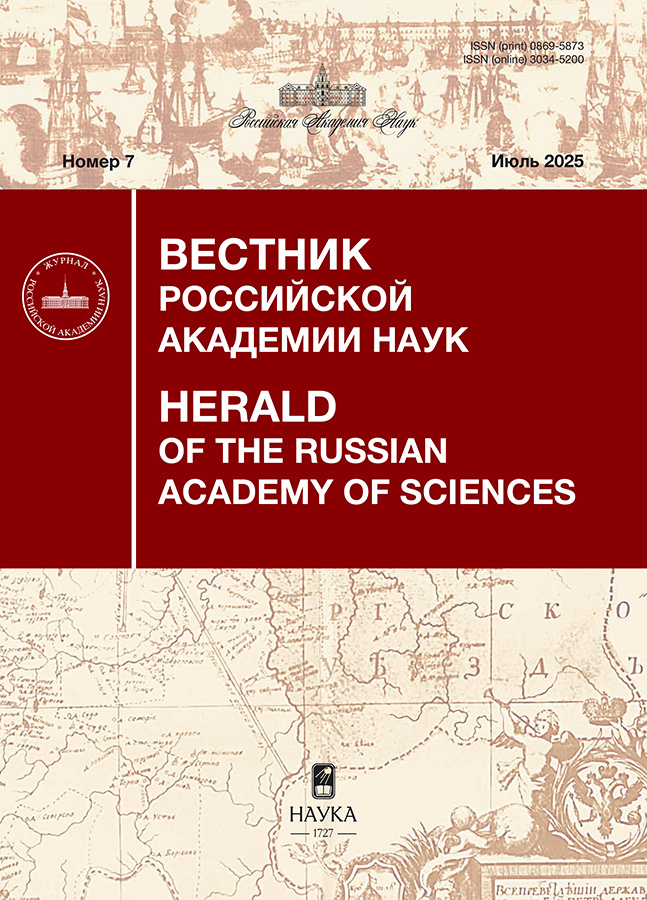Engineering recombinant proteins: from structure to function and biological activity
- Autores: Dolgikh D.A.1,2
-
Afiliações:
- Shemyakin-Ovchinnikov Institute of Bioorganic Chemistry RAS
- Lomonosov Moscow State University
- Edição: Volume 95, Nº 7 (2025)
- Páginas: 55-60
- Seção: Review
- URL: https://journals.eco-vector.com/0869-5873/article/view/688265
- DOI: https://doi.org/10.31857/S0869587325070063
- EDN: https://elibrary.ru/FIIRKS
- ID: 688265
Citar
Texto integral
Resumo
The article discusses the development of recombinant protein engineering, primarily artificial proteins or de novo proteins, from the creation of the first proteins with a given spatial structure and biological activity to modern work in this area, which widely uses machine learning and artificial intelligence methods. The use of these methods, in particular the Rozetta and AlphaFold computer platforms, has led to tremendous progress in this area, as evidenced by last year’s Nobel Prize in Chemistry. Currently, these methods should be recommended for use in any modern laboratory conducting work on the physical chemistry of proteins and protein engineering.
The article is based on the author’s report at a scientific session of the Division of Biological Sciences of the Russian Academy of Sciences on December 10, 2024.
Texto integral
Sobre autores
D. Dolgikh
Shemyakin-Ovchinnikov Institute of Bioorganic Chemistry RAS; Lomonosov Moscow State University
Autor responsável pela correspondência
Email: dolgikh@nmr.ru
доктор биологических наук, профессор, руководитель лаборатории инженерии белка ИБХ РАН, профессор кафедры биоинженерии биофака МГУ
Rússia, Moscow; MoscowBibliografia
- Долгих Д.А., Федоров А.Н., Чемерис В.В. и др. Получение и исследование альбебетина, искусственного белка с заданной пространственной структурой // Доклады АН. 1991. Т. 320. С. 1266–1269. / Dolgikh D.A., Fedorov A.N., Chemeris V.V. et al. Production and study of albebetin, an artificial protein with a given spatial structure // Reports of the Academy of Sciences. 1991, vol. 320, pp. 1266–1269.
- Bychkova V.E., Dolgikh D.A., Balobanov V.A. et al. The Molten Globule State of a Globular Protein in a Cell Is More or Less Frequent Case Rather than an Exception // Molecules. 2022, vol. 27, no. 4361.
- Kuhlman B., Dantas G., Ireton G.C. et al. Design of a novel globular protein fold with atomic-level accuracy // Science, 2003, vjl. 302, pp. 1364–1368.
- Chevalier A., Silva D.-A., Rocklin G.J. et al. Massively parallel de novo protein design for targeted therapeutics // Nature, 2017, vol. 550, pp. 74–79.
- Wallace H.M., Yang H., Tan S. et al. De novo design of peptides that bind specific conformers of α-synuclein // Chemical Science, 2024, vol. 15, pp. 8414–8421.
- Jumper J., Evans R., Pritzel A. et al. Highly accurate protein structure prediction with AlphaFold // Nature, 2021, vol. 596, pp. 583–589.
- Finkelstein A.V., Ivankov D.N. Protein 3D Structure Identification by AlphaFold: a Physics-Based Prediction or Recognition Using Huge Databases? // Journal of Molecular Biology, 2024, vol. 6, pp. 1–10.
- Chakravarty D., Porter L.L. AlphaFold2 fails to predict protein fold switching // Protein Science, 2022, vol. 31, e4353.
Arquivos suplementares












